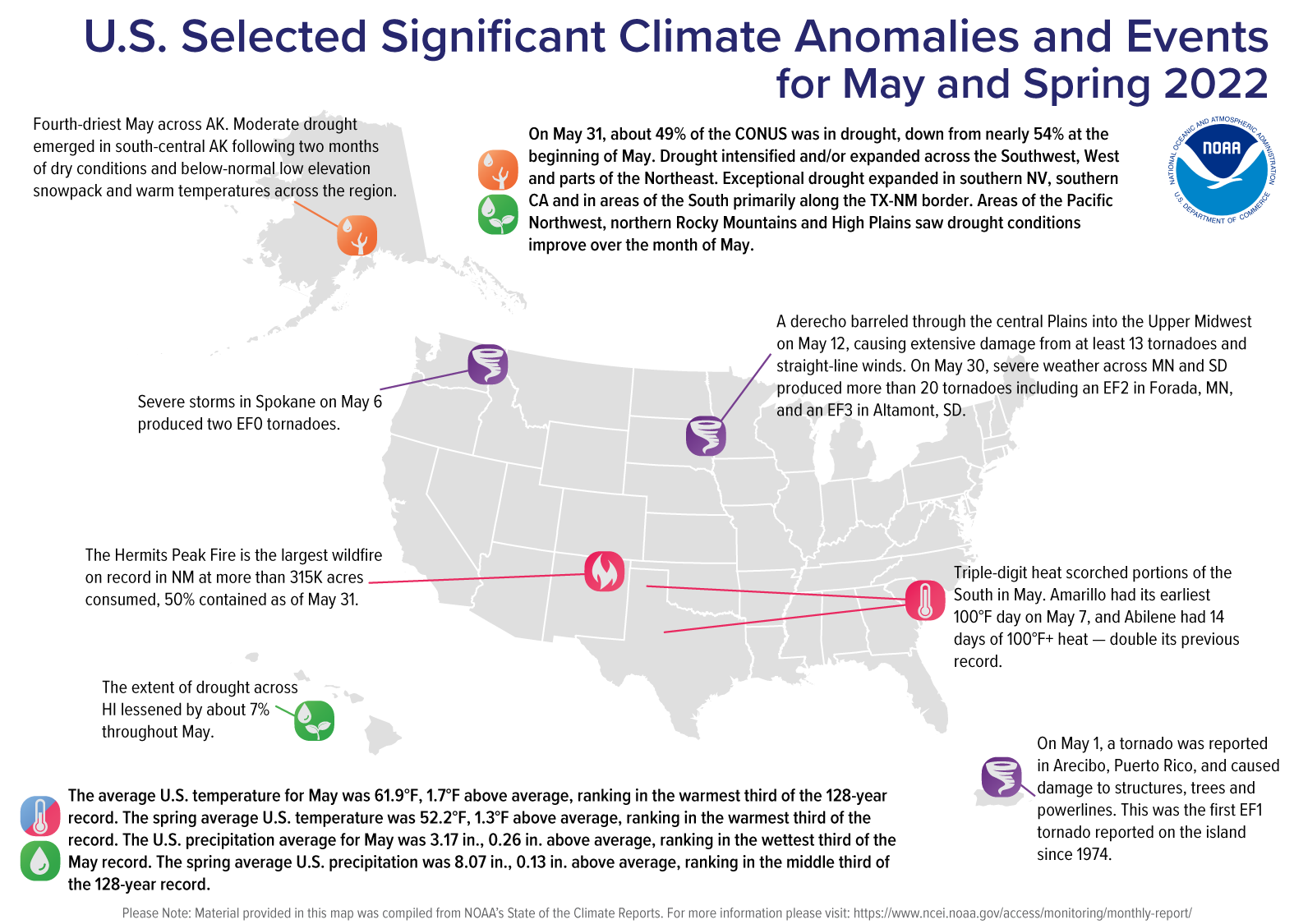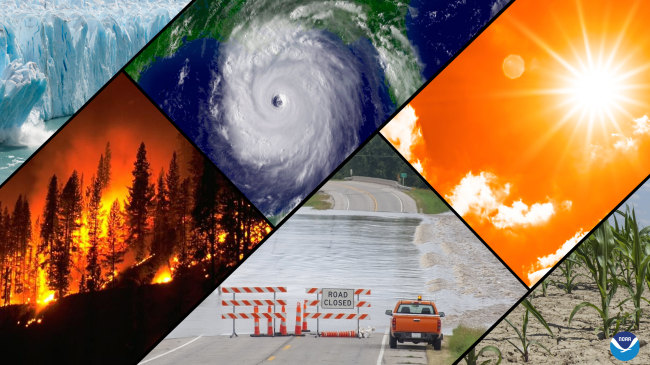Wildfires raged, drought conditions improved slightly

The Silver City Hotshots conduct firing operations along Highway 518 west of Holman, New Mexico, on May 9, 2022, during the Hermits Peak Fire. The fire became New Mexico’s largest wildfire in state history in May 2022, scorching more than 315,000 acres. (Image credit: Inciweb)
May was warm and wet across the Lower 48, according to scientists from NOAA’s National Centers for Environmental Information.
The month also wrapped up a warm spring as wildfires continued to burn across the nation.
Below are highlights from NOAA's U.S. monthly climate report for May 2022:
Climate by the numbers
May 2022
The average May temperature across the contiguous U.S. was 61.9 degrees F (1.7 degrees above the 20th-century average), ranking in the warmest third of the 128-year record.
Temperatures across the Northwest and northern Rockies were below average, with much of the Southwest, Deep South and locations east of the Mississippi River above average. Triple-digit heat scorched portions of the South throughout the month, setting a number of temperature records across Texas. Texas had its second-warmest May on record, while Washington state saw its eighth coldest.
The average precipitation for May was 3.17 inches (0.26 of an inch above average), which ranked in the wettest third of the record.
Precipitation was above average across portions of the Northwest, northern and central Plains, Upper Mississippi Valley, Ohio Valley, eastern Gulf of Mexico and the Appalachians. Precipitation was below average from California to Texas and across portions of the Northeast. A dry month across the Southwest resulted in Arizona seeing its fifth-driest May on record, while above-average precipitation gave Washington state its eighth-wettest May.
Meteorological spring (March through May 2022) | Year to date
The average temperature for the contiguous U.S. during meteorological spring was 52.2 degrees F (1.3 degrees F above average), which ranked in the warmest third of the record. Rhode Island ranked fourth warmest while nine additional states — Arizona, Connecticut, Florida, Maine, Massachusetts, New Hampshire, New Jersey, New Mexico and Texas — ranked among their ten-warmest spring seasons on record.
The spring precipitation total of 8.07 inches (0.13 of an inch above average) placed it in the middle third of the record. North Dakota ranked fourth wettest while New Mexico saw its sixth-driest spring.
The average U.S. temperature for the year to date (YTD, January through May) was 44.3 degrees F, 1.0 degree F above average, ranking in the warmest third of the record. The first five months of 2022 were also quite dry, with a precipitation total of 11.48 inches, 0.91 of an inch below average, and ranking in the driest third of the record. California saw its driest such YTD on record while Arizona, Nevada and Utah ranked third driest for this five-month period. Meanwhile, North Dakota saw its fourth-wettest YTD.

Other notable highlights from the report
Wildfires roared across the landscape: As of May 31, the largest fire in New Mexico history, the Hermits Peak Fire, had consumed more than 315,000 acres and was 50% contained. Across all 50 states, 1.9 million acres have burned from January 1 through June 2 — more than twice the average for this time of year.
Drought improved overall, with exceptions: According to the May 31 U.S. Drought Monitor report offsite link, 49.3% of the contiguous U.S. was in drought, down about 4.5% from the beginning of May. Areas of the Pacific Northwest, northern Rocky Mountains and High Plains saw drought conditions improve over the month of May while drought intensified or expanded across the Southwest, West and parts of the Northeast.
A stormy May with fewer tornadoes: Several rounds of severe weather hit the U.S. during May, producing 196 preliminary tornado reports. This is 71% of the 1991-2010 average for tornadoes for the month of May (276). On May 4, severe storms formed across the central Plains and produced several tornadoes including an EF3 tornado near Lockett, Texas. A line of severe storms, also known as a derecho, barreled across the central Plains into the Upper Midwest on May 12, causing extensive damage from at least 13 tornadoes and straight-line winds.
More > Access NOAA’s latest climate report and download the images.
Media contact
John Bateman, (202) 424-0929




